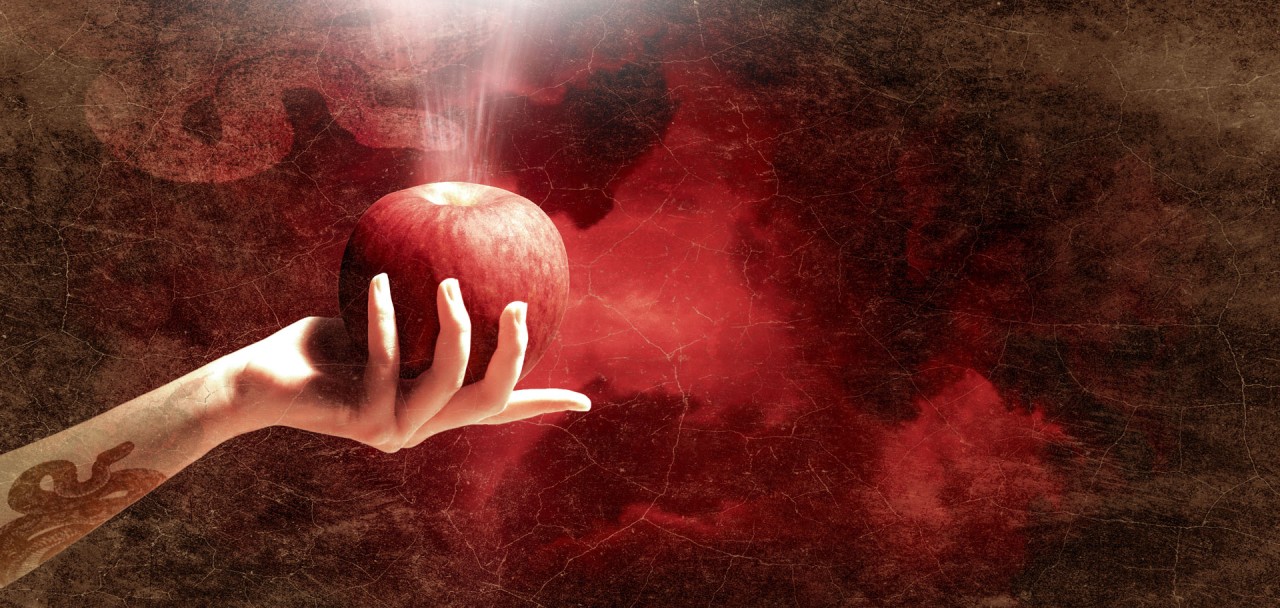A fresh and old perspective on customer experience
In my previous Maximize your experience article I talked about the importance of setting expectations when designing a customer/employee experience program to support sustainable growth.
In this blog I explain why we as consumers are asking organizations to exceed our expectations and why just meeting our needs is not satisfactory. In keeping with my personal interest in history and society, I’m using a few, rather different examples than the norm to illustrate the way customer experience was taking shape from early days until the present.
I suggest that the need to create the WOW effect (and its connection to the draw of the Customer Experience) is something that has roots back in ancient times, it is actually a deep human nature that is true in all walks of life. While we spend a lot of time speaking about how things are today and how the future will look like, we might gain some interesting insights if we step back in time and watch our ancestors.
Theodore Roosevelt said, “The more you know about the past, the better prepared you are for the future.”
Bear in mind, as you read through the stories, two aspects that illustrate the layers of the power of Customer Experience and the need for the WOW. By this I mean:
1) Inside the story itself – why did the characters/organizations act the way they did? What were the drivers in decision making and the triggers? What made the experience so attractive?
2) In the telling of the story through generations – what resonates then and now with the symbolism and the affinity with the characters/organizations and the situation they are in?
Prepare your hammers, brush-up the swords, let’s open the door to the world of our ancestors…
Adam and Even in the Garden of Eden or how curiosity drives customer engagement
Adam and Eve were locked in the cozy garden of Eden living in perfect harmony with nature. Their basic needs were fulfilled, and their route was paved to a pleasant eternal life. They could eat from everything in the garden except for one apple tree that was forbidden – The Tree of Knowledge; it was a tree that promised awareness upon tasting its fruit.
The concept of awareness was vague to Eve, but she was curious enough to give it a shot with the snake’s encouragement (good or bad is in the eyes of the beholder as his premise). After tasting from the forbidden tree, her eyes were opened to unknown new dimensions. She was now conscious and WOW-ed.
Why did Eve take such a risk when her life was so comfortable?
Eve’s act symbolizes our unstoppable drive of curiosity to know more and take risks, even when our situation is comfortable. As humans we are not satisfied in the ordinary or in what we have, we are seeking innovation that will feed our need for renewal. Our curiosity is driving us to be constantly learning, exploring new fields and to a desire to achieve more.
From a business perspective (it’s the promise and the experience itself again): companies are looking to innovate to satisfy this need of customers for renewal in form of new exciting offers that facilitate improvement of their lives. Companies that stay on the innovation curve and gain an innovative edge in the eyes of their customers will be more attractive on the market compared to old-fashioned players.
CURIOSITY DRIVES INNOVATION. INNOVATION CREATES THE WOW EFFECT.
The Golden Calf or how quick wins satisfy impatient customers
Moses is up on the mountain of Sinai for 40 days while the people are waiting on the outskirts for some news. People get anxious, why should they continue to follow an amorphic concept while the other peoples they know worship tangible gods that actually have a shape and a name? Getting impatient, the people decide to act, they gather all their jewelry, melt it down and build from it a golden calf, all shiny and amazing – a sigh of excitement spreads across the camp, WOW.
Why did the people need to build a golden calf and couldn’t be satisfied with a simple stone statue?
The bright calf represents the admiration we have for the shiny, for the tangible matter over the amorphic concept. We prefer to see, touch and feel than just use our imagination. The people couldn’t satisfy with a simple stone statue of a calf; they needed more than that (and it goes further than proof – it’s the “amaze me then!”) in order to make an impression to justify the excitement and live up to the expectation of what a mighty god would stand for.
From a business perspective: in the modern world, the same behavioral pattern can be detected in various events throughout history and today. Impressive buildings, decorations, costumes, advertisements, military parades, etc. all serve the purpose of creating a WOW effect of admiration that results with “brand” loyalty and customer cohesion.
When designing a Customer Experience model, we need to design something that looks attractive and worth the customer’s investment. This sense of admiration can only be triggered for something that has a perceived value that meets customer expectations.
IMPRESSIVE CREATIONS GENERATE A WOW REACTION
The Roman empire or how a virtual community can unite different peoples
At its peak, the Roman empire ruled around 20% of the world’s population, with hundreds of different indigenous peoples under their occupation, governed by a central administration with local provinces. Paving roads, establishing order, demonstrating might, opening trade between regions and in particular, introducing their culture – which became universal. These all served as a reference point to what should be considered as WOW in the ancient world.
How was Rome able to control so many peoples and survive for so long?
One of the key elements behind this impressive stability of the Roman empire was the extension of some form of citizenship to many of the people it conquered. The offer of citizenship and its tangible benefits helped expand the empire, by building a sense of shared identity and common values that were steeped in the Roman-Hellenistic culture and reinforced loyalty to Rome.
From a business perspective: today, the virtual communities formed on social media gather people from around the globe sharing their experiences. This fulfills our need to belong to something, to follow a trend or a dominant culture (“we like the same things, I feel confident to spread the word”). The personal customer experience and the definition of what is considered as WOW is influenced by the community you belong to, impacting the perception a community member will have for a product or a service offer. This is the “echo-chamber” effect we hear so much about.
COMMUNITIES DEFINE WHAT IS CONSIDERED AS WOW
The industrial revolution or how mass consumption commoditized customer experience
The Industrial Revolution was the transition from hand-production methods to mass-production using mechanized factory systems and processes. Since the 1700’s, the Industrial Revolution and those that followed, led to vast social and economic changes, resulting in an increase in living standards, urbanization, population growth and literacy. Mass production of goods also gave rise to mass-consumption and thus to the development of more competitive markets of buyers and sellers; the larger the consumption the bigger the opportunity (and need) is for the WOW effect to reach broader audiences.
How did our tendency to consume more create the need for commoditization?
The Industrial Revolutions significantly increased the supply of goods, retail networks, and global traffic, encouraging consumers to buy more, more, more. The will for a good bargain, to have more than my neighbor continues to dominate consumption behavior and thus to push the market to develop more offers. Psychologically speaking, our need to have more is related to a subconscious equation that tells us that more is better than less.
From a business perspective: mass-consumption gave rise to highly competitive markets. Globalization and technology have facilitated the ease of doing business and serving your audience. The fact consumers consume more than they need has created an inflation of demand and in fact extended the size of the market. In order to fulfill these rising needs, organizations must turn to mass-production and this is only efficient when you replicate the same thing over and over again as a repetitive business – hence commoditizing your offer. In this context organizations find it harder to compete and have to resort to the WOW effect to help them stand out versus the competition.
IN A WORLD OF COMMODITIES ONLY THE WOW EFFECT CAN CUT THROUGH THE NOISE
The age of the customer or how freedom of choice sets expectations for a WOW effect
Finally, we reach nowadays. Are they less exciting? I don’t think so. History is being written at the speed of light, events that could fill decades are flashing by in just a few years. The competitive landscape created a force of agility that has become the new normal and everyone/everything needs to adapt to constant change.
The “green field” of branded offers opens a variety of selection in every corner of the “flat world”. The WOW effect is now universal with a standard of its own in various industries that are influenced from everything that is happening.
How is freedom of choice driving customer experience?
Customers in most industries are not captives, they have an awareness to on-going events around the globe, they are looking to get the best possible bargain based (mostly) on the beliefs of the community they belong to selecting from a wide variety of products. Again, social media as a deep presence in our lives plays a major part here, encouraging consumers to learn, compare and negotiate before they make a deal.
From a business perspective: the days when businesses dominated the narrative and dictated what customers heard and saw from the brand are shifting. Now empowered buyers demand a new level of customer obsession. This means that doing business depends more than ever on exceeding expectations, transforming customers into brand advocates to qualify both the promise and the experience itself.
FREEDOM OF CHOICE OBLIGES COMPANIES TO LOOK FOR THE WOW EFFECT
My conclusions about WOW, CX and Innovation
Many other examples could have been brought in this article to explain the need to create a WOW effect both from the consumer side as well as from the business perspective.
I hope you are persuaded, by reaching back in time and deeper within ourselves, that the fact is that human nature didn’t really change over time. The need to be amazed changed shapes and forms, but the basics stay the same.
From the early days in the Garden of Eden freedom of choice led by curiosity revealed our need to know more, to explore new horizons and to look for something to admire. We came via a long route until we could call it Human Experience, it sums up to our will to experience exciting moments in our lives (personal or at work); this is why Customer Experience is my passion as it answers this basic and unwavering desire.
Have you any other past examples in mind for the WOW effect? Please share your thoughts.






